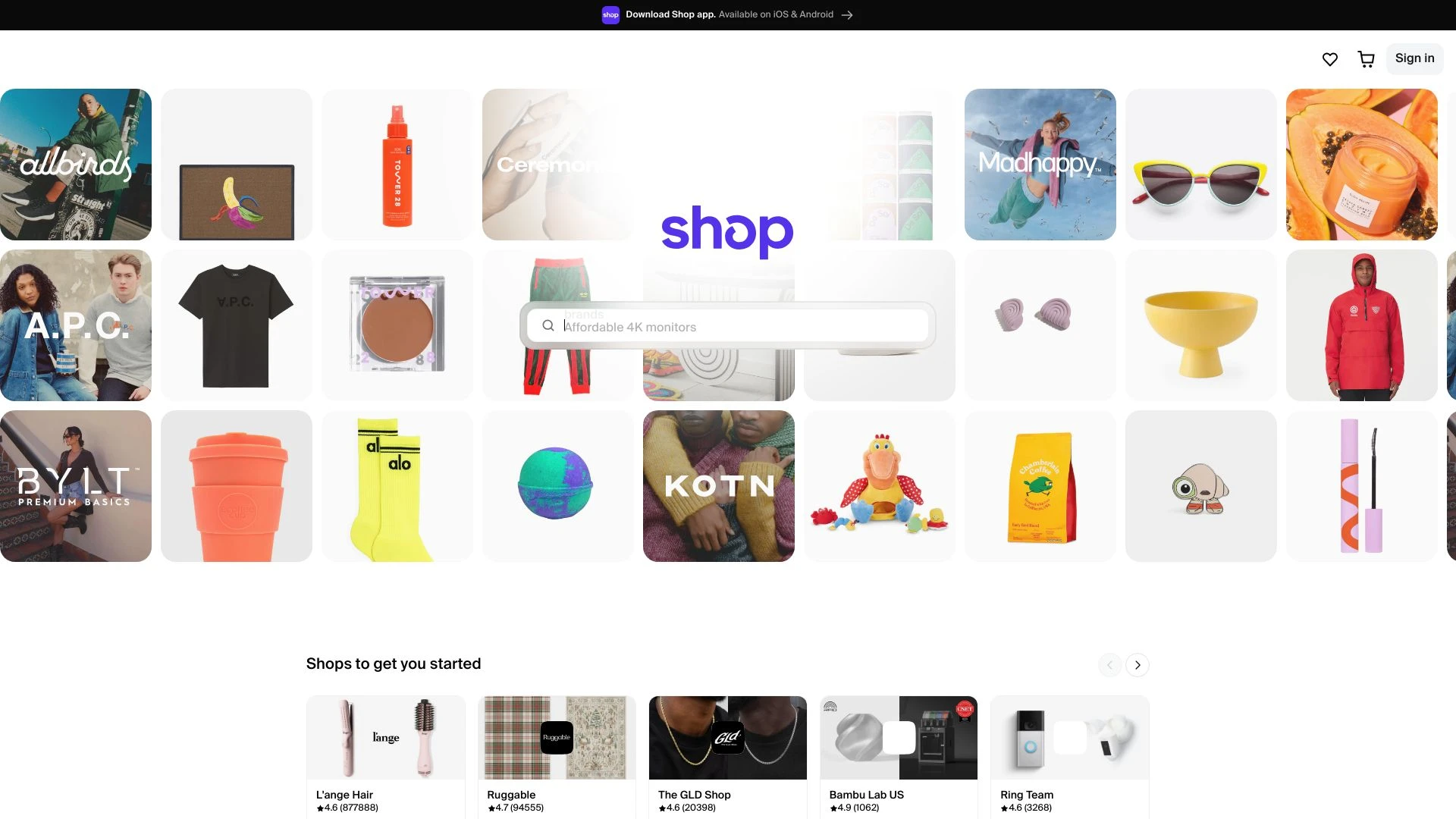Shop: Your AI-Powered Shopping Assistant versus ShopUp App
Shop: Your AI-Powered Shopping Assistant offers personalized product recommendations and price comparisons, targeting online shoppers seeking efficiency. Launched in 2020 by Shopify, it enhances the shopping experience. In contrast, ShopUp, founded in 2016, aids small businesses in e-commerce by providing logistics and payment solutions, focusing on entrepreneurs and SMEs.


Shop: Your AI-Powered Shopping Assistant
Ideal For
Convenient online shopping
Tracking specific products
Earning rewards for purchases
Personalizing shopping experiences
Key Strengths
Streamlined shopping process
Enhanced personalization
Opportunity to earn rewards
Core Features
AI-powered shopping assistant
Easy search and discovery
Exclusive rewards
Fast checkout with Shop Pay
Real-time order tracking
ShopUp App
Ideal For
Explore ongoing discounts at nearby shops
Maximize credit card rewards during purchases
Stay updated on seasonal sales
Receive personalized shopping advice
Key Strengths
Saves money with localized deals
Enhances shopping efficiency
Provides tailored credit card advice
Core Features
Discover local sales
Get credit card recommendations based on sales
AI-driven analysis
User-friendly interface
Real-time updates
Popularity
At a Glance
Shop: Your AI-Powered Shopping Assistant excels in personalized recommendations using AI, while ShopUp App focuses on streamlining online storefronts for small businesses. Pros for Shop include tailored shopping experiences. Cons involve potential data privacy concerns. ShopUp's pros center on easy integration and efficiency; its cons might include limited features. For personalized shopping, choose Shop; for business management, opt for ShopUp.
Pricing and Subscription Plans
Shop: Your AI-Powered Shopping Assistant offers a free basic tier with premium features starting at $15/month. Custom plans are available for larger businesses, including advanced analytics. Conversely, ShopUp App features a free version with paid plans beginning at $20/month, providing bulk discounts for scaling businesses. While Shop offers lower starting costs, ShopUp provides broader features, making both effective depending on business needs and size.
Performance Metrics
Shop: Your AI-Powered Shopping Assistant excels in speed, providing quick product recommendations through advanced algorithms, while ShopUp App focuses on accuracy, delivering precise deals based on user preferences. Reliability benchmarks favor Shop for consistent performance, whereas ShopUp shines in user satisfaction during personalized shopping scenarios.
User Experience
Both Shop: Your AI-Powered Shopping Assistant and ShopUp App prioritize user experience but differ in execution. Shop features a sleek, intuitive interface with easy navigation and strong customizability through AI-driven recommendations. In contrast, ShopUp offers a straightforward design but may lack some advanced customization options. Learning curves are minimal for both, supported by extensive user resources, including FAQs and tutorials to enhance the shopping experience.
Integrations and Compatibility
Shop: Your AI-Powered Shopping Assistant integrates with platforms like Shopify and WooCommerce, enhancing e-commerce workflows. ShopUp App connects with diverse payment systems and logistics services, streamlining order management. Both offer robust third-party app support.
Limitations and Drawbacks
Both Shop: Your AI-Powered Shopping Assistant and ShopUp App face limitations like limited product availability and user customization. Common shortcomings include integration issues and slow response times. Workarounds include using multiple apps for better options and regularly updating settings for efficiency.